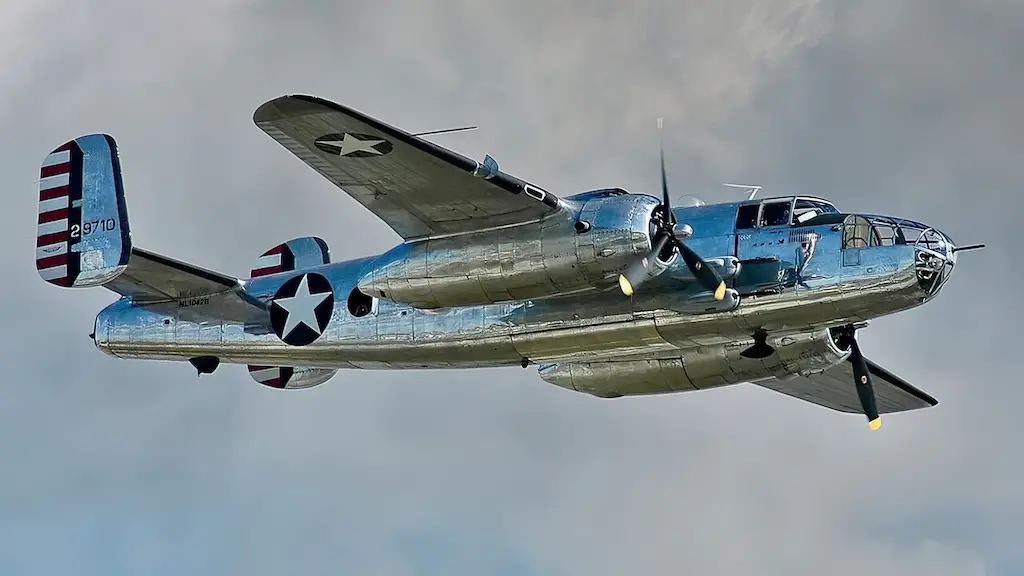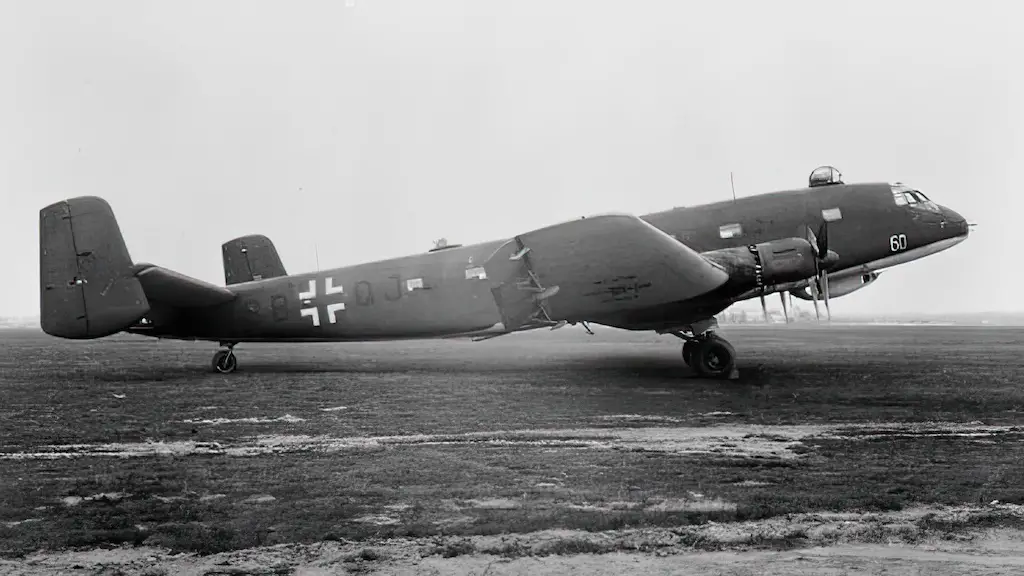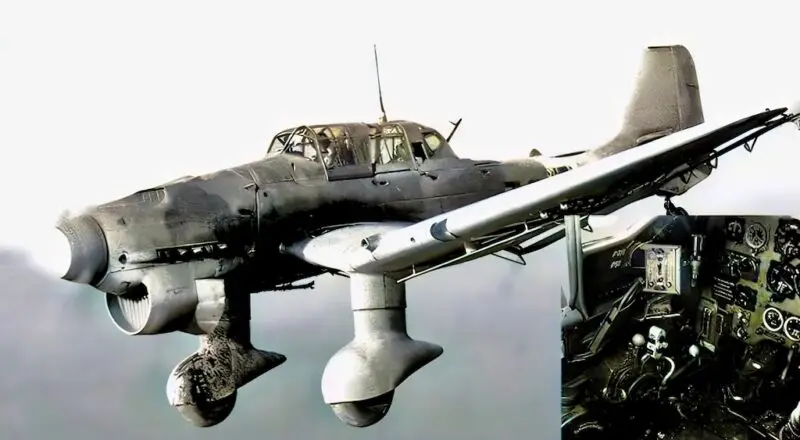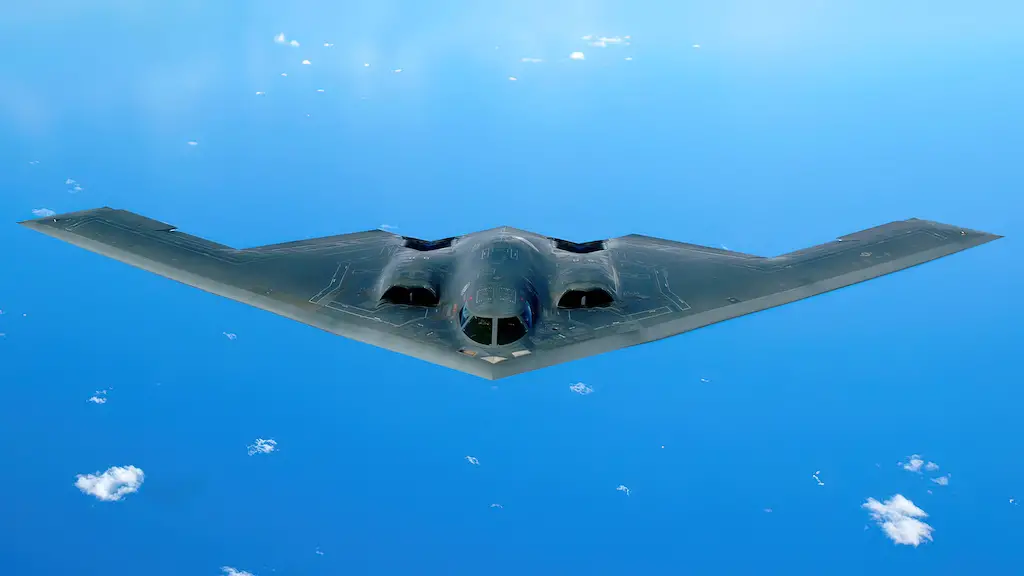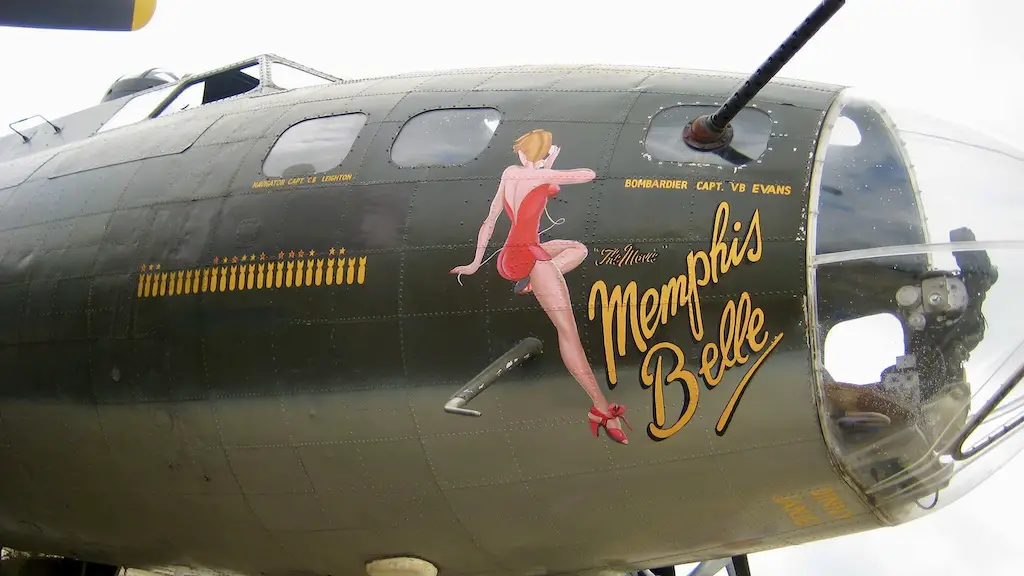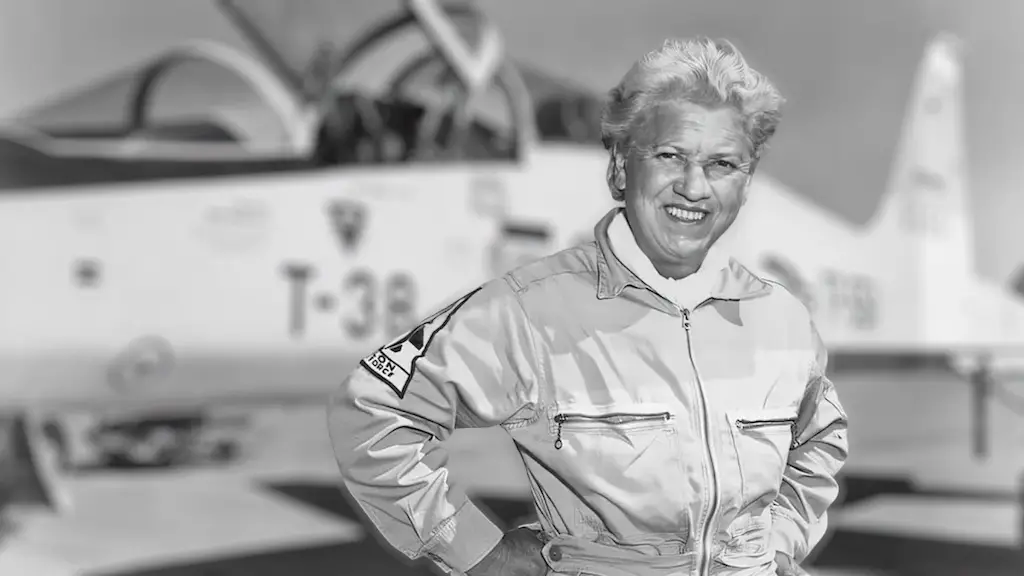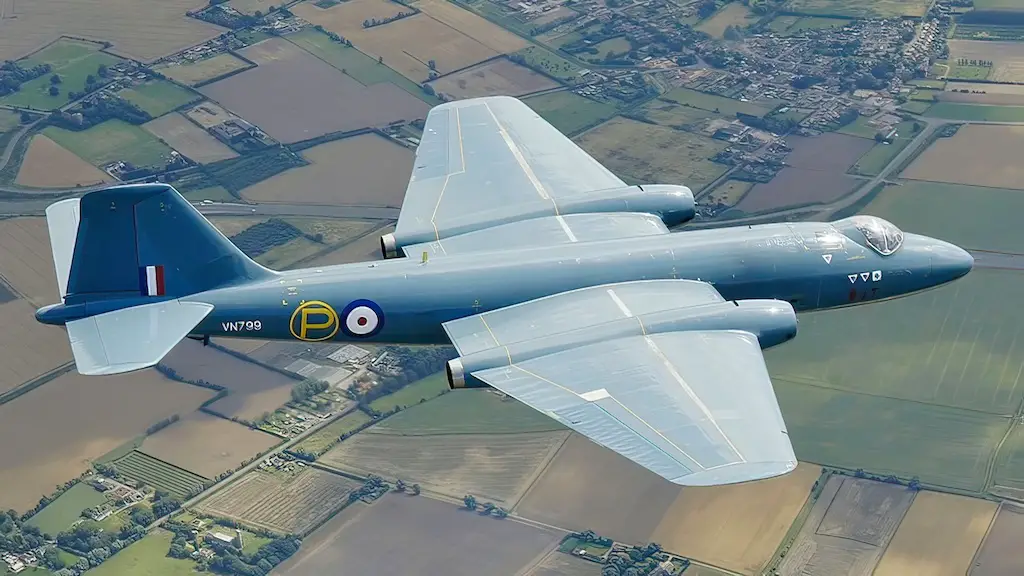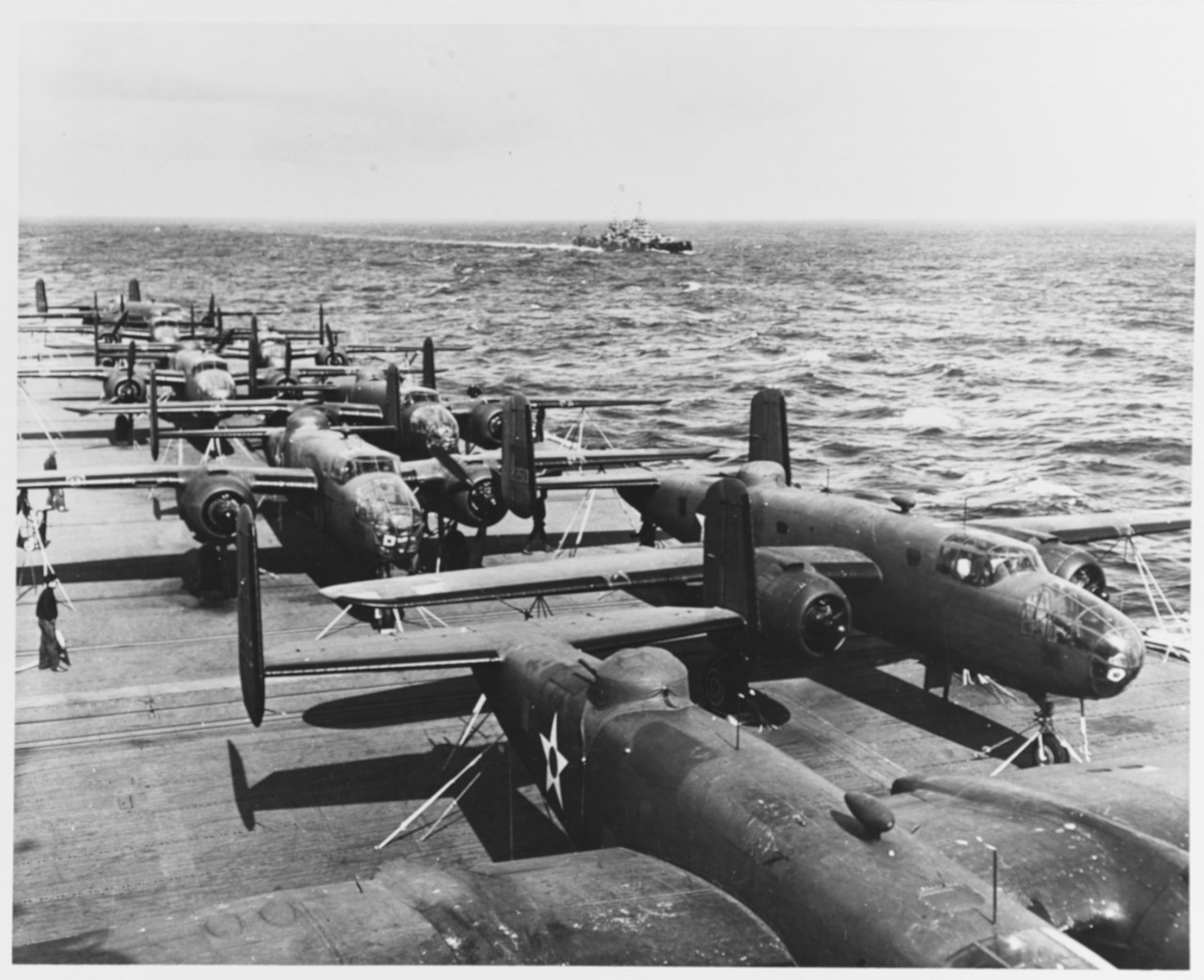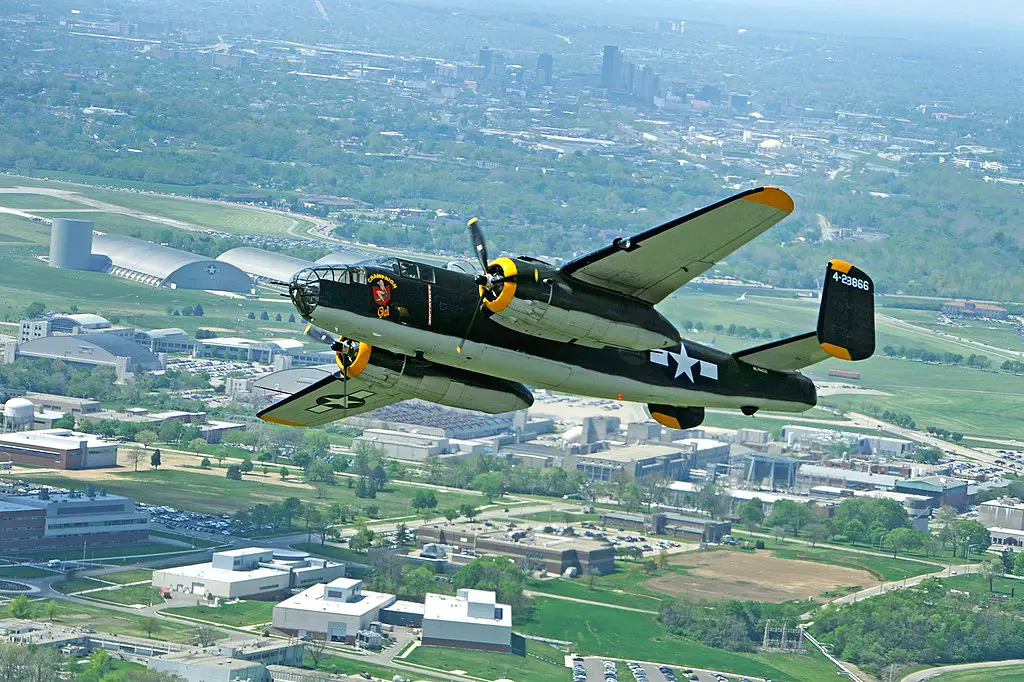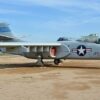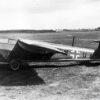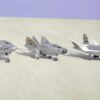The North American B-25 Mitchell, introduced into service in 1941, soon proved itself as an effective and reliable bomber aircraft. Among its first feats was the brave Doolittle Raid on Tokyo in April 1942. All in all 9,816 aircraft of this type were manufactured, making Mitchell the third most-produced US bomber. The B-25 was also extremely adaptable and versatile aircraft, and one of its most successful applications essentially gave life to a new type of aircraft, the gunship. It was the B-25G Mitchell variant, conceived in 1942 as a means of harassing Japanese shipping in the Pacific.
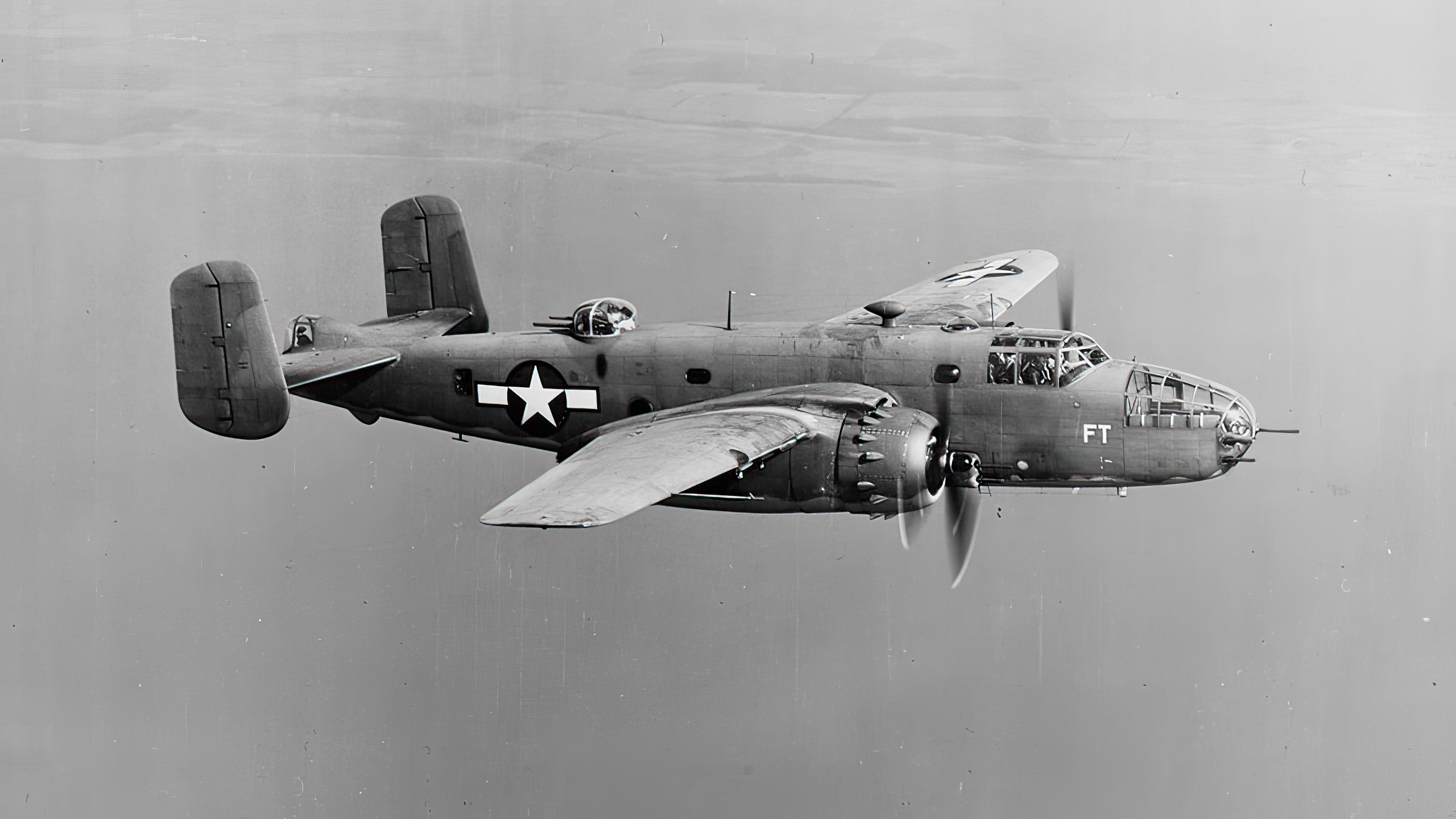
A fearsome strafer
B-25 crews actually started using their bombers as gunships even before the arrival of the G series. Those field modifications featured such changes as additional machine guns in the nose and proved very useful in the attacks on Japanese vessels. An especially remarkable example of that was the Battle of the Bismarck Sea in March 1943, when B-25s sank several Japanese vessels by strafing and skip-bombing them. Meanwhile, the United States Army Air Forces (USAAF) encouraged North American to make a dedicated gunship based on the B-25 bomber.
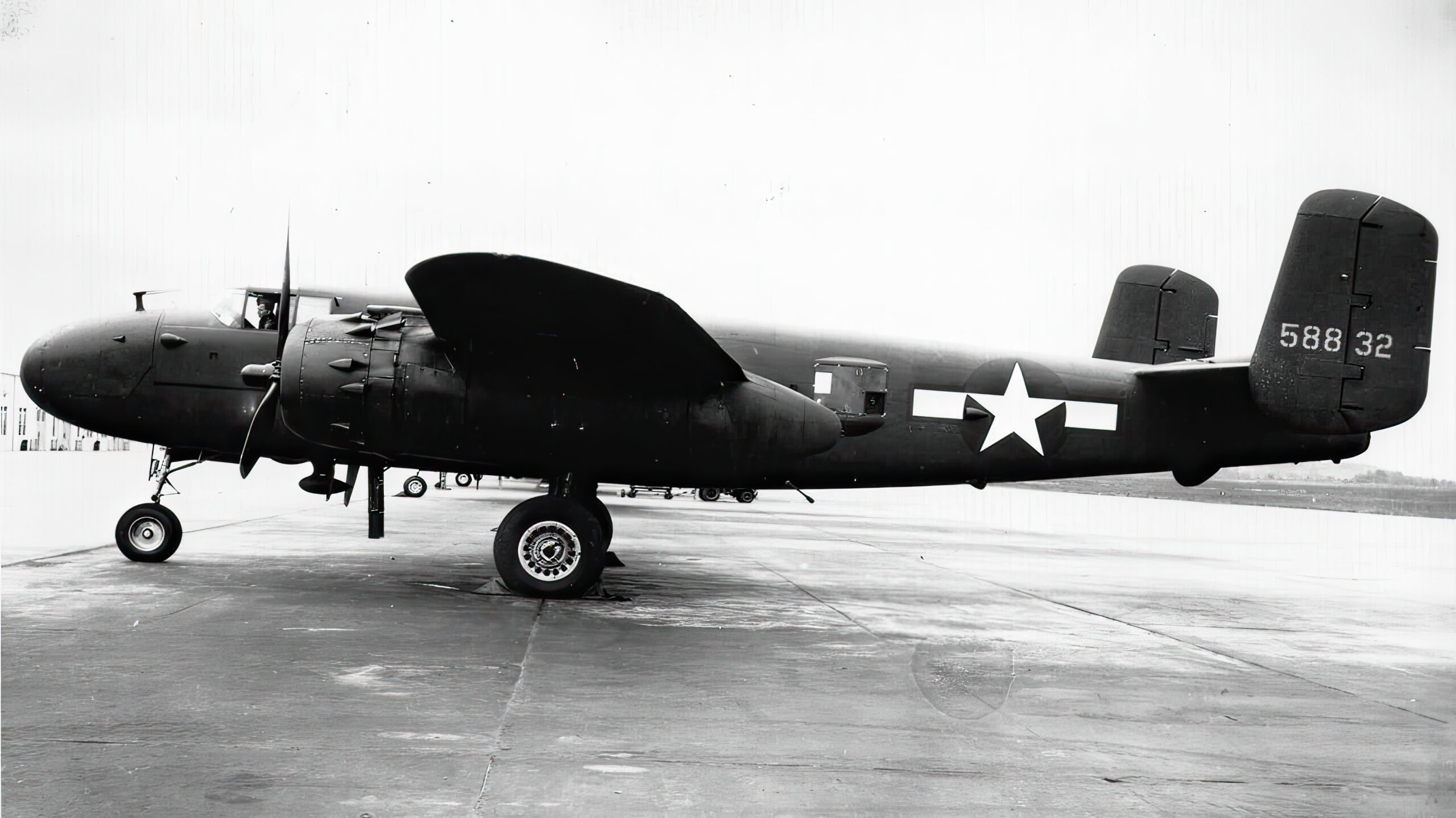
Adapting the B-25 to the new role
To meet the USAAF requirements North American significantly changed the aircraft’s gun armament, adding to the existing set of defensive weapons some serious offensive capabilities. Bomber variants of the aircraft, such as B-25C and B-25D, had one .30 caliber machine gun in the nose and four .50 caliber machine guns in two Bendix turrets on the fuselage top and under the belly. In the B-25G the single peashooter gun in the nose was replaced by yet another pair of .50 caliber guns. Besides that, the aircraft got a mighty 75mm cannon with 21 rounds of ammo, which was manually loaded by the navigator and fired by the pilot.
In the process North American design team also applied a number of other changes to the standard B-25 design. Most notably, instead of the bomber’s distinctive glazed nose, the modified aircraft got a shorter nose without glazing. North American produced a total of 400 B-25Gs, not to count several dozen conversions from the B-25C.

Other gunship variants
Once the Mitchell gunship proved its worth, North American developed one more B-25 version for this role, the B-25H, and produced as many as 1,000 these planes. The B-25H had even more weapons than its forerunner: a lightweight T13E1 75mm cannon designed specifically for the Mitchell and twelve .50 caliber machine guns: four fixed ones in the nose, two blister guns on the fuselage, two in the top turret, two at the waist station, and another two in the tail turret. And some 4,800 rounds of ammo for all those guns.
The B-25J combining features of the B-25D and B-25H became the most-produced Mitchell variant with 4,318 such aircraft going off the production line. It didn’t carry the 75mm cannon, so from that point it was a bomber rather than a gunship. On the other hand, some of B-25J sub variants carried as many as eighteen guns. For instance, the B-25J-2 had as many as eight guns mounted just in the nose. Some also had underwing rocket pods.
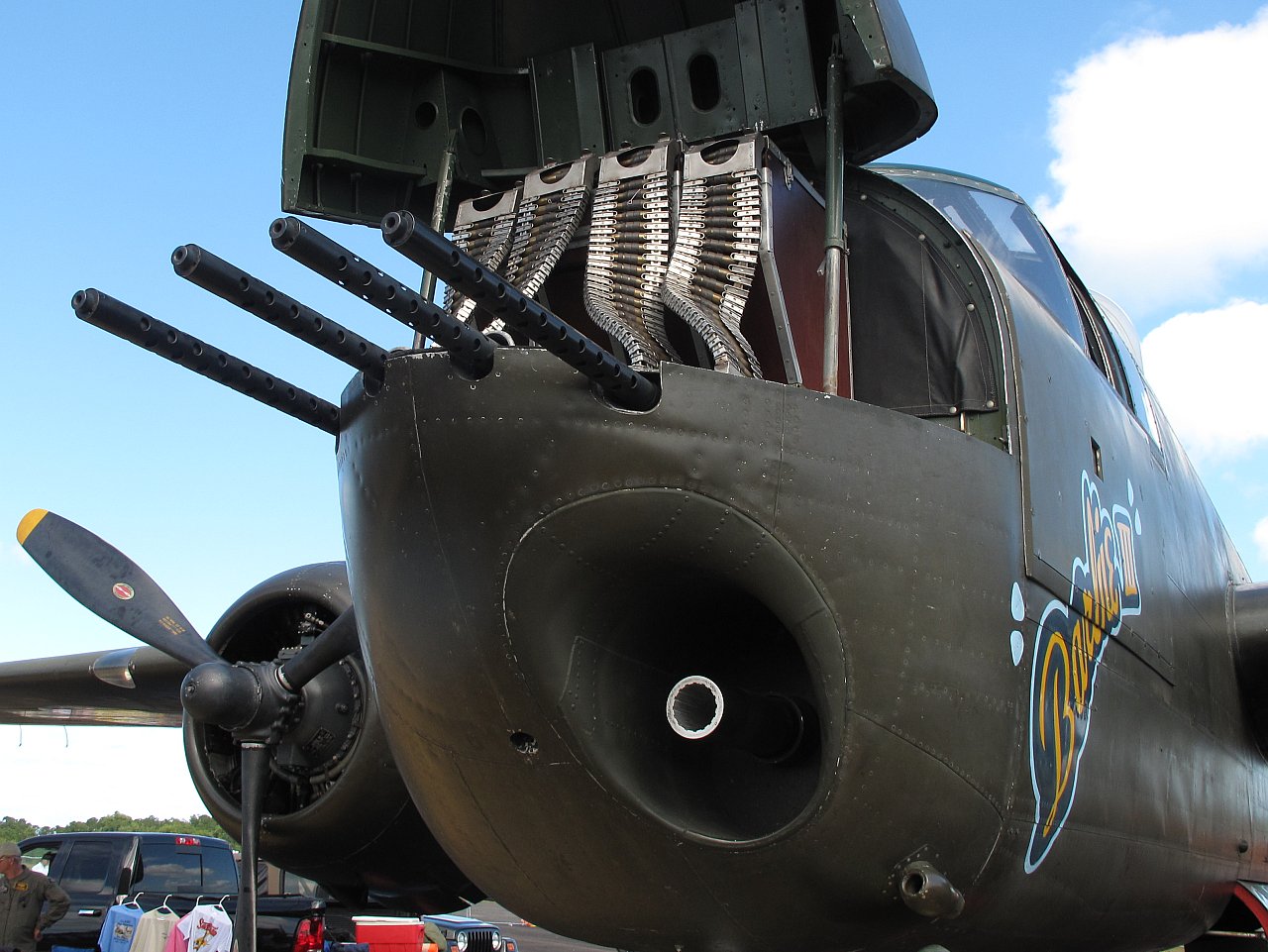
Dedicated gunships in combat
In July 1943, the first B-25Gs started arriving to the Pacific theater of operations, where they were soon put to use in the New Britain campaign. Mitchell cannon ships attacked Japanese shipping, airfields, and anti-aircraft artillery positions, spending 1,253 75-mm rounds in just 36 days. The cannon proved to be a deadly weapon against Japanese barges and freighters, although it had a very low rate of fire and was not particularly helpful in attacks on land-based targets. In fact, some crews had it removed and replaced with another pair of machine guns, especially from 1944 onwards, when sea targets justifying the use of the cannon had become rather scarce.

